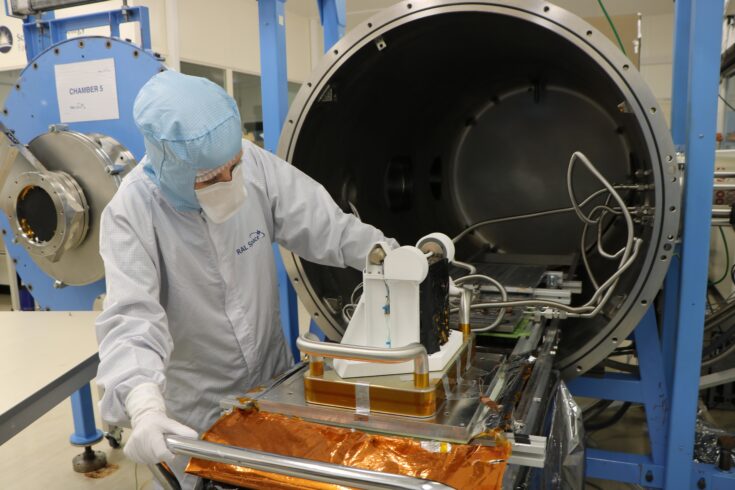A team of UK scientists from the Science and Technology Facilities Council’s (STFC) RAL Space and the Open University (OU) are collaborating on the European Space Agency (ESA) and NASA mission to investigate the occurrence and behaviour of water on the Moon
A team of scientists, led by the OU’s Dr Simeon Barber, have developed a sensor known as the Exospheric Mass Spectrometer (EMS) to form part of the Peregrine Ion Trap Mass Spectrometer (PITMS).
The instrument will measure water and other molecules in the very thin atmosphere of the Moon which will help scientists understand the concept of a lunar water cycle.
Understanding resources on the Moon and learning how to use these as supplies for drinking water or rocket propellant could reduce mission costs and enable human exploration.

PITMS was developed using a fast-track development strategy that balanced high efficiency of instrument development with a careful risk management approach and is led by Dr Barbara Cohen at NASA’s Goddard Space Flight Centre.
RAL Space was responsible for the EMS overall mechanical design, the electronic design, instrument software and ground support equipment. They also worked closely with NASA on the PITMS thermal design.
Dr Simeon Barber, EMS lead from the Open University, said:
“PITMS will study how water and other molecules behave during the warm lunar daytime near a lunar lander. We will obtain ground truth measurements to fill in the detail of the broader view we already have from remote measurements by orbiters.
“And then we will complete the picture using similar instruments on future landers near the cold lunar poles, where these molecules may have accumulated over billions of years to form a treasure trove of scientifically and practically valuable resources.”
Chris Howe, Production and Software Group Leader at STFC RAL Space said:
“We have landed a similar instrument on a comet as part of ESA’s Rosetta mission but nothing has been as challenging as developing an instrument against the backdrop of the pandemic. To have designed, built and tested a proto-flight lunar instrument in just 18 months has been a huge achievement for RAL Space and the OU.
“Now we look forward to discovering more about the lunar water cycle and playing our part in furthering human exploration of the solar system.”
Ellis Elliot, Project Manager at STFC RAL Space, said:
“It has been a great experience to be part of such a new and different project. Although not always being easy to organise the project in a pandemic, I’ve been so proud to be part of the team and oversee their design work transforming into an instrument that will be on the moon’s surface.
“The collaboration with the Open University and ESA has been very rewarding and hopefully a channel to further partnerships to build on the teams experience.”











